The desert garden section in the Pitzer garden has a large array of very unique plants. The plants in the desert garden share a few common characteristics such as sunlight, soil conditions, and water. The different plants all need to be planted in an area where they will receive lots of sun to partial shade, along with soil that drains well, and many of them are draught tolerant, so they need very little water. The students who designed the garden wanted to create an environment that would be natural to California. By adding desert plants in the garden, which are native to the southwest region, it would help reduce water consumption and increase sustainability. The main goal of the Scott Lawn project was a create an environment that would reduce excessive use of water, and the best way to do that was to create a collection of native plants. The plants in the desert garden are not only beautiful but help conserve our natural resources.
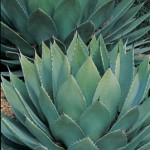 Common Name: Parry’s Agave
Common Name: Parry’s Agave
Latin Name: Agave parryi
Native Habitat: Sonoran Desert
Soil: Well drained
Water: Drought tolerant
Light: Sun to partial shade
Height X Width: 18 inch x 18 to 24 inch rosette
Leave or Stems: Gray-green leaves with toothed edges and hard spine at tip
This cactus produces a 10-15 foot talk stalk with yellow flowers late in its life. The bloom occurs in late spring to early summer and will remain if not removed. Parry’s agave will die after producing the flower stalk.
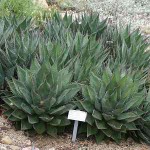 Common Name: Shaw Agave
Common Name: Shaw Agave
Latin Name: Agave shawii
Native Habitat: RARE, costal sagescrubs below 1,500 ft. in San Diego County and Baja California
Soil: Dry, decomposed granite, sand, low organic content, well drained
Water: None
Light: Sun to partial shade
Height X Width: 2 feet X 2 feet
Leave or Stems: Evergreen, dark green
This plant tends to grow dark green leaves and forms a colony of rosettes that arrange like a rose. The Shaw will grow for several years until it is large enough to bloom, the bloom stock looks like a large asparagus at it gets larger.
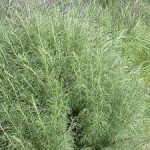 Common Name: Costal Sagebrush
Common Name: Costal Sagebrush
Latin Name: Artemisa californica
Native Habitat: Coastal scrub, chaparral and dry foothills below 2,500 ft. in drier parts of central and southern California
Soil: Dry, decomposed granite, sand, clay, loam, low organic content, well drained
Water: None to twice a month
Light: Sun to partial shade
Height X Width: 3ft. X 3ft.
Leave or Stems: Evergreen, silver, aromatic
Costal Sagescrub provides a pleasant scent. The sage can also be used as part of your herb garden; it also works well on roasts and can be make into beautiful dry arrangements.
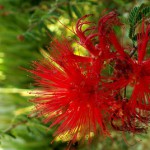 Common Name: Red Fairy Duster
Common Name: Red Fairy Duster
Latin Name: Calliandra californica
Native Habitat: Baja California
Soil: Well drained
Water: Drought tolerant to infrequent
Light: Sun
Height X Width: 3 feet x 6 feet
Leaves or Stems: Semi-evergreen shrub with overlapping leaflets. Flower clusters with red stamens that will bloom from early spring to fall.
The seedpods on red fairy dusters open explosively when ripe from the tip to base, sending seeds several yards away.
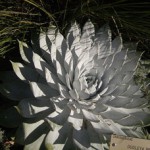 Common Name: Britton Dudleya
Common Name: Britton Dudleya
Latin Name: Dudleya brittonii
Native Habitat: Northwestern Baja California, steep bluffs in maritime coastal scrub
Soil: Well drained
Water: Drought tolerant to infrequent
Light: Full sun to part shade
Height X Width: 6 to 12 inch wide rosette
Leaves or Stems: White coating on flattened 1 to 2 inch wide leaves. Flower stalk in spring, 1 ½ to 2 ½ feet, turns dark red as pale yellow flowers bloom.
Has chalky white leaves that grow to over a foot across. The britton dudleya requires very well drained soil. Dudleya is commonly known as “live-forever,” these plants are known to live for a very long time, some have been know to live for 50-100 years. This plant thrives off neglect, it need very little water and sufficient sun light.
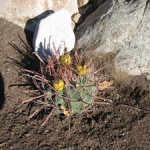 Common Name: Fierce Cactus
Common Name: Fierce Cactus
Latin Name: Ferocactus viscainensis
Native Habitat: Southern Baja California
Soil: Well drained
Water: Drought tolerant
Light: Full sun
Height X Width: 5 feet x 1 foot
Leaves or Stems: Hooked spines, blooms of yellow color that sprout in late summer to early fall.
Fierce Cacti are round with long hook-like spines. The spines of the cactus have a pinkish-red color to them that creates a beautiful contrast off the sphere shape of the cactus. The roots of the cactus are very shallow.
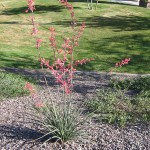 Common Name: Red Yucca
Common Name: Red Yucca
Latin Name: Hesperaloe parviflora
Native Habitat: Limestone hills, arroyos and mesquite thickets in Chihuahuan Desert, infrequent to rare in the wild
Soil: Moist to dry, decomposed granite, sand, clay loam, limestone, low to high organic content, well drained
Water: None to once a week
Light: Sun to partial shade
Height X Width: 2 feet X 3 feet
Leave or Stems: Evergreen
The flowers of the Red Yucca are actually a salmon/coral color. This yucca has spineless leaves which make them extremely desirable to rabbits and deer; this may explain why they are hardly ever found in the wild. Red Yuccas are easy to grow in a garden, but may need chicken-wire cages to protect the young plants from being foraged.
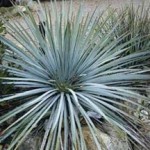 Common Name: Our Lord’s Candle
Common Name: Our Lord’s Candle
Latin Name: Hesperoyucca whipplei
Native Habitat: Chaparral, coastal and desert scrub between 1,000 to 4,000 feet in southern California and northern Baja California
Soil: Dry, decomposed granite sand, clay loam, low organic content, well drained
Water: None or once a month
Light: Sun
Height X Width: 3 ft. X 5 ft.
Leave or Stems: Silvery evergreen
Our Lord’s Candle is more like an agave compared to other yuccas because it only blooms once in it’s lifetime. Unlike an agave, the leaves of Our Lord’s Candles are long and narrow. The flowers start to bloom when the stalk is a foot or two above the leaves, producing about six feet of bloom.
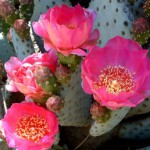 Common Name: Beavertail Cactus
Common Name: Beavertail Cactus
Latin Name: Opuntia basilaris
Native Habitat: Creosote bush scrub below 3,000 feet in Sonora and Colorado deserts, below 6,000 feet in Joshua tree woodland in the Mojave Desert
Soil: Dry, decomposed granite, sand, clay loam, low organic content, well drained
Water: None to once a month, drought tolerant to infrequent
Light: Sun to partial shade
Height X Width: Maximum: 4 feet x 4 feet. Usual 1 foot x 2 feet.
Leaves or Stems: Evergreen, lacks spines, 3 to 4 inch-wide flowers of varying colors.
The Beavertail Cactus is a southwestern prickly pear known for its large flowers and lack of spines. Instead of spines, these cacti have 1/8-inch glochids that form in tufts on the areole.
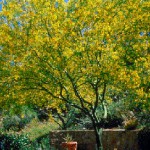 Common Name: Parkinsonia X Cercidium
Common Name: Parkinsonia X Cercidium
Latin Name: xParkinsidium
Native Habitat: Washes and sandy areas in desert woodland below 1200 feet; California’s Colorado Desert to Arizona and northern Mexico
Soil: Well drained
Water: Drought tolerant, none to once a week.
Light: Sun
Height X Width: Maximum: 30 feet x 40 feet
Leaves or Stems: Yellow-green trunk/branches, tiny leaves shed quickly, bare branches for most of year, no spines, ½ inch wide yellow flowers from spring through fall.
This cultivar is a three-way hybrid between two California species and one Mexican species. The Desert Museum palo verde is propagated by cuttings or grafting.
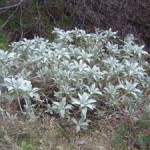 Common Name: White Sage
Common Name: White Sage
Latin Name: Salvia apiana
Native Habitat: Dry slopes and flat in coastal scrub, chaparral, and some woodlands and forests below 4,500ft. Santa Barbara County to northwestern Baja California.
Soil: Adaptable, well-drained preffered
Water: Drought tolerant to occasional
Light: Sun
Height X Width: 2 ft. X 3 ft.
Leave or Stems: Siver-green, aromatic, drought-deciduous
The White Sage offers gardeners many pleasures such as beautiful floral display, strong scents, and bold foliage. Many California Indians believe that White Sage is sacred and use it in purification ceremonies.
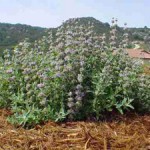 Common Name: Purple Sage
Common Name: Purple Sage
Latin Name: Salvia leucophylia
Native Habitat: Common on dry, open hills and slopes in costal scrub and chaparral beow 2,000 ft. Monterey County south to northwestern Baja California.
Soil: Adaptable
Water: Drought tolerant to occasional
Light: Sun
Height X Width: 7ft. X 4ft.
Leave or Stems: Silver-green, aromatic, drought-deciduous
The Purple Sage is one of the easiest native sages to grow, although its common name may be misleading; the plant produces spikes of light to rosy pink flowers in the spring. The foliage of the sage blends well with many other colors making it easy to blend in your garden.
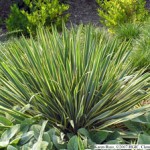 Common Name: Adam’s Needle
Common Name: Adam’s Needle
Latin Name: Yucca filamentoas
Native Habitat: Native to the southeastern North America, they grow in dry, sandy or rocky habitats in fields, road shoulders and open woods.
Soil: average to dry soil-drought tolerant
Water: drought tolerant to occasional
Light: Sun to partial shade
Height X Width: 2.5 f t X 2.5 ft
Leave or Stems: medium green, glaucous, evergreen, sword-like, radiating from ground-level fibrous stems.
Often confused with small palms, the Adam’s Needle has long, thin sword-like leaves. It produces a stalk of 2 inch-long white flowers; the plant dies after flowering. However, it produces lateral buds that start new plants around the edges of the original plant.
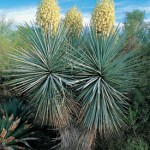 Common Name: Blue Yucca
Common Name: Blue Yucca
Latin Name: Yucca rigida
Native Habitat: Chihuahuan Desert, Mexico
Soil: Any, good drainage
Water: Natural rain fall, best once or twice during hottest weather
Light: Sun to partial shade
Height X Width: 12ft. X 5 ft.
Leave or Stems: evergreen, silver/grey
The Blue Yucca produces beautiful flat blue-grey sword-like leaves that turn brown and fall down parallel to the trunk once they become mature. They need very minimal maintenance.
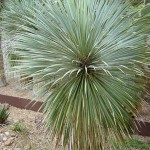 Common Name: Beaked Yucca
Common Name: Beaked Yucca
Latin Name: Yucca rostrata
Native Habitat: Texas native, southwestern, also found in Mexico
Soil: Prefers alkaline soil and excellent drainage is needed. Sandy loam best.
Water: None to once a month
Light: Sun
Height X Width: 15ft. X 3ft.
Leave or Stems: Evergreen, Silver/grey, Blue-Green
The yucca is a tree-like plant that grows native in the southwest US. It has needle pointed leaves as most yuccas, rostrata means beaked, because its leaves reminisce a birds beak.